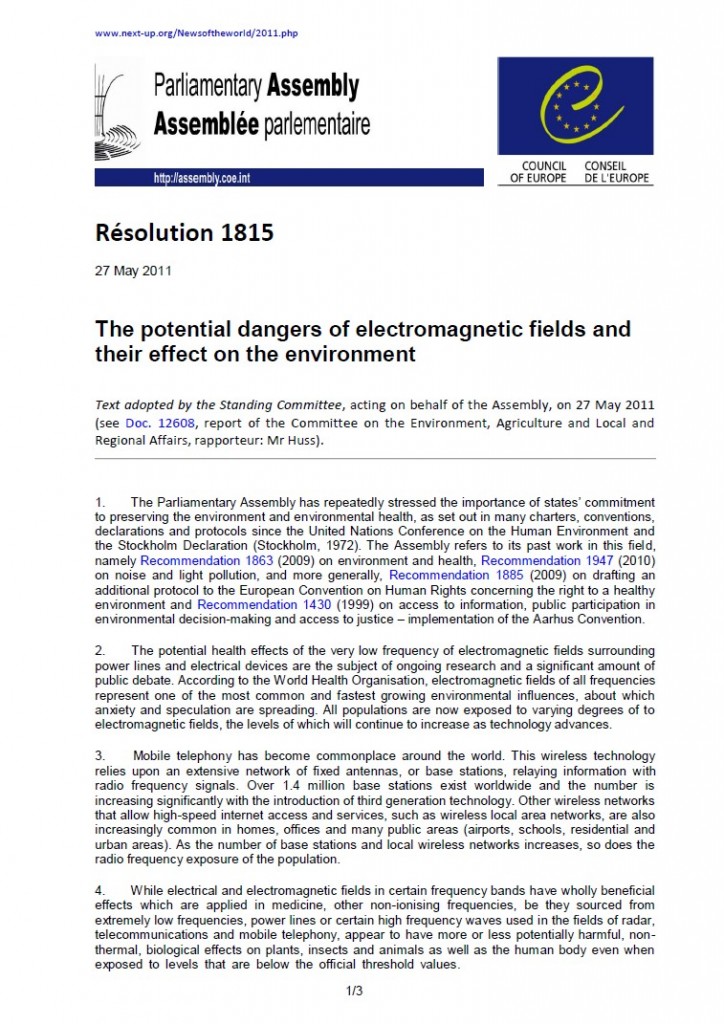Portada del sitio > Fauna > Modern technology may be bugging SA insects
Modern technology may be bugging SA insects
Viernes 4 de enero de 2008 · 1713 lecturas
Modern technology may be bugging SA insects
Tony Carnie
January 04 2008 at 11:43AM
Are cellphone masts and the electronic fuzz from radios and televisions destroying some of South Africa’s valuable insect life?
While it may be too early to judge for sure, early results from a study commissioned by the Oppenheimer family suggest that some forms of electromagnetic radiation appear to have a measurable impact on ants and other creeping, crawling or flying insects.
Preliminary results of the five-year project by entomologists Max Clark and Peter Hawkes are due to be published later this year.
The two insect specialists were asked to investigate the possibility that increasing levels of electromagnetic radiation around the country could be harming the health of insect life.
It was initiated by Strilli Oppenheimer, wife of De Beers and E Oppenheimer and Sons group head Nicky Oppenheimer. She became concerned about a noticeable decline in insect life in her garden at Brenthurst, Johannesburg, and at the Ezemvelo Nature Reserve near Bronkhorstspruit.
According to an article in the Johannesburg-based specialist magazine Environmental Matters, more than a million insects have been collected from 24 sites over the past two summers by Clark and Hawkes, with help from insect and zoology students at Wits and Pretoria Universities.
Measurements of electromagnetic radiation from cellphone masts, FM radio, television and other sources had also been collected to see if there was a correlation between signal density and insect numbers and variety.
Environmental Matters Editor Carol Knoll said while the two researchers were cautious about drawing any definite conclusions at this stage, they had seen an apparent trend towards fewer ant species at the sites with the highest electromagnetic signal densities.
However, they stressed that there were several other human disturbances to urban and rural landscapes which could also be responsible - including light pollution, chemical and heavy metal pollution in the soil and fragmentation of the natural landscape by farming and urbanisation.
Another possible confounding factor was the varying impacts between the three main cellphone frequency bands.
Clark also noted that city gardens in Gauteng were now more like forests compared to the old highveld grasslands they had replaced.
Apart from the Brenthurst and Ezemvelo sites, insects were also collected from gardens east and west of Pretoria, the Moreletta Nature Reserve and National Botanical Garden in Pretoria.
The magazine also spoke to Duncan MacFadyen, manager of research and conservation at E Oppenheimer and Son, who noted that the importance of insect life to the ecology and human beings was often underestimated.
"We rely on them for the pollination of many plant species, for controlling the growth of vegetation, for keeping ’pests’ in check and for turning over the soil and for many other activities in farming and gardening. It is important that we understand how human activities impact on insects and ecosystems."
Not surprisingly, the researchers found far fewer varieties of insects in heavily disturbed sites such as commercial mealie farms.
But some creatures such as the flightless Tiger Beetle - once common throughout Gauteng - could now be found only at the Ezemvelo reserve.
These beetles were especially vulnerable to human disturbances to the environment because they could not fly away to recolonise other areas.
Other insect types were also vulnerable because they ate or depended on specific grasses or herbs.
Apart from trying to measure the effects of electromagnetic fuzz on creepy crawlies, the project will also be important for future researchers by providing detailed baseline information on the current diversity of insect life.
Whereas only four ant species were found in a large maize field, nearly 40 ant types were found in a near-pristine grassland area.
This article was originally published on page 4 of Pretoria News on January 04, 2008
Ver la noticia original AQUÍ







